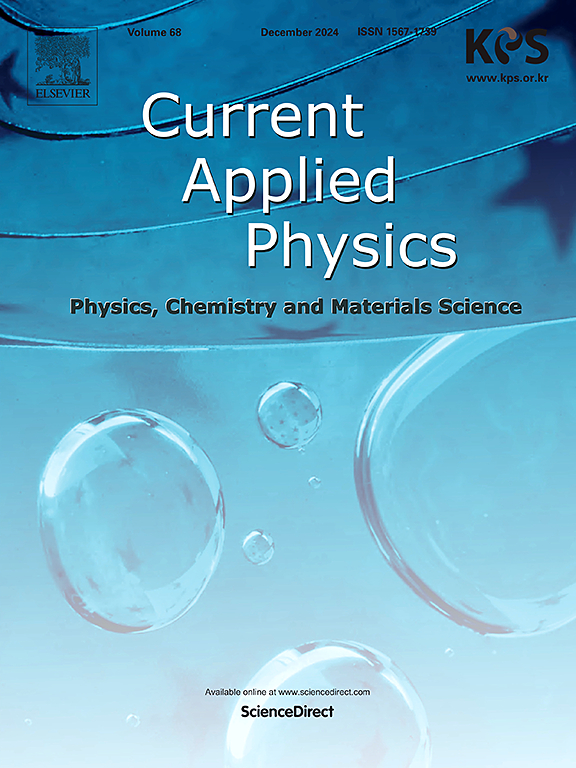Epitaxial Sr-doped nickelate perovskite thin films and Ruddlesden-Popper phases grown by magnetron sputtering
IF 3.1
4区 物理与天体物理
Q3 MATERIALS SCIENCE, MULTIDISCIPLINARY
引用次数: 0
Abstract
Sr-doped nickelate, Nd1-xSrxNiO3 (NSNO), perovskite thin films and Ruddlesden-Popper (RP) phases are actively investigated because of their physical properties, such as the metal-insulator transition and superconductivity. However, achieving epitaxial growth of NSNO perovskite and RP phase films in a sputtering system is challenging compared to pulsed laser deposition and molecular beam epitaxy, due to the difficulty in stabilizing nickel oxidation states and minimizing structural defects. Here, we used an off-axis radio frequency (RF) magnetron sputtering to fabricate epitaxial NSNO perovskite and RP phase thin films on SrTiO3 (001) substrates, systematically controlling the growth temperatures. We investigated the thermal stability of the perovskite phase and the structural and electronic characteristics of the RP phase films. These findings provide valuable insights into the synthesis of nickelate RP phase films using RF magnetron sputtering, paving the way for scalable thin films fabrication technologies.

磁控溅射生长外延掺锶镍钙钛矿薄膜和Ruddlesden-Popper相
由于其物理性质,如金属绝缘体转变和超导性,研究了掺锶镍酸盐、Nd1-xSrxNiO3 (NSNO)、钙钛矿薄膜和Ruddlesden-Popper (RP)相。然而,与脉冲激光沉积和分子束外延相比,在溅射系统中实现NSNO钙钛矿和RP相薄膜的外延生长是具有挑战性的,因为难以稳定镍氧化态和最小化结构缺陷。本文采用离轴射频磁控溅射技术在SrTiO3(001)衬底上制备了外延NSNO钙钛矿和RP相薄膜,系统地控制了生长温度。我们研究了钙钛矿相的热稳定性以及RP相薄膜的结构和电子特性。这些发现为利用射频磁控溅射合成镍酸盐RP相薄膜提供了有价值的见解,为可扩展的薄膜制造技术铺平了道路。
本文章由计算机程序翻译,如有差异,请以英文原文为准。
求助全文
约1分钟内获得全文
求助全文
来源期刊

Current Applied Physics
物理-材料科学:综合
CiteScore
4.80
自引率
0.00%
发文量
213
审稿时长
33 days
期刊介绍:
Current Applied Physics (Curr. Appl. Phys.) is a monthly published international journal covering all the fields of applied science investigating the physics of the advanced materials for future applications.
Other areas covered: Experimental and theoretical aspects of advanced materials and devices dealing with synthesis or structural chemistry, physical and electronic properties, photonics, engineering applications, and uniquely pertinent measurement or analytical techniques.
Current Applied Physics, published since 2001, covers physics, chemistry and materials science, including bio-materials, with their engineering aspects. It is a truly interdisciplinary journal opening a forum for scientists of all related fields, a unique point of the journal discriminating it from other worldwide and/or Pacific Rim applied physics journals.
Regular research papers, letters and review articles with contents meeting the scope of the journal will be considered for publication after peer review.
The Journal is owned by the Korean Physical Society.
 求助内容:
求助内容: 应助结果提醒方式:
应助结果提醒方式:


